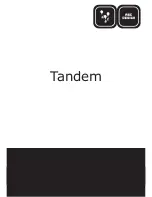
IOM CRUZcontrol®
P/N: 90480009
Revision Date: 03/18/2019
Page
47
of
58
The Full Function Module is connected as shown just downstream of the last accumulation zone prior
to the curve. Release from that zone is stopped if the Auxiliary Photo Sensor senses full accumulation
(blocked for a time delay period), or if the Logic Assembly just downstream of the curve stops the
upstream release due to being accumulated. The Full Function Module is set up as follows:
•
Jumper JP3 is on 2-3 (Logic Interrupt)
•
Jumper JP4 is not connected
•
Zone Status On and Zone Status Off timing is set by potentiometers in function module. Time
delays are from 0 to 20 seconds. A normal operating range would be about 3 seconds for each.
The Full Function Module is internally wired and connected to the photoelectric sensor as follows. All
terminal references are as found in the Full Function Module.
Photoelectric sensor wiring:
Brown wire to TB4, + VDC
Blue wire to TB4, 0V
Black wire to TB4, ZS Input
TB4, + VDC also connects to TB3, NC
TB4, 0 VDC also connects to TB1 (-)
TB3 COM connects to TB1 (+)
(TB5, + VDC and 0 VDC can also be used if the connection of too many wires to TB4 is a problem.)
If the Logic Assembly just downstream of the curve is Basic Logic, the release rate into the curve would
be affected. The use of Progressive Logic Assemblies after the curve would allow for higher rates.
Note that stopping the release of product as done in this example could result in a product left partially
on the powered curve with the trailing end on the stopped discharge end of the accumulation conveyor.
If this is a concern, a photo sensor should be added to the discharge zone, with appropriate logic to
insure that no products are stopped partially released. This could require the addition of PLC based
logic.
















































